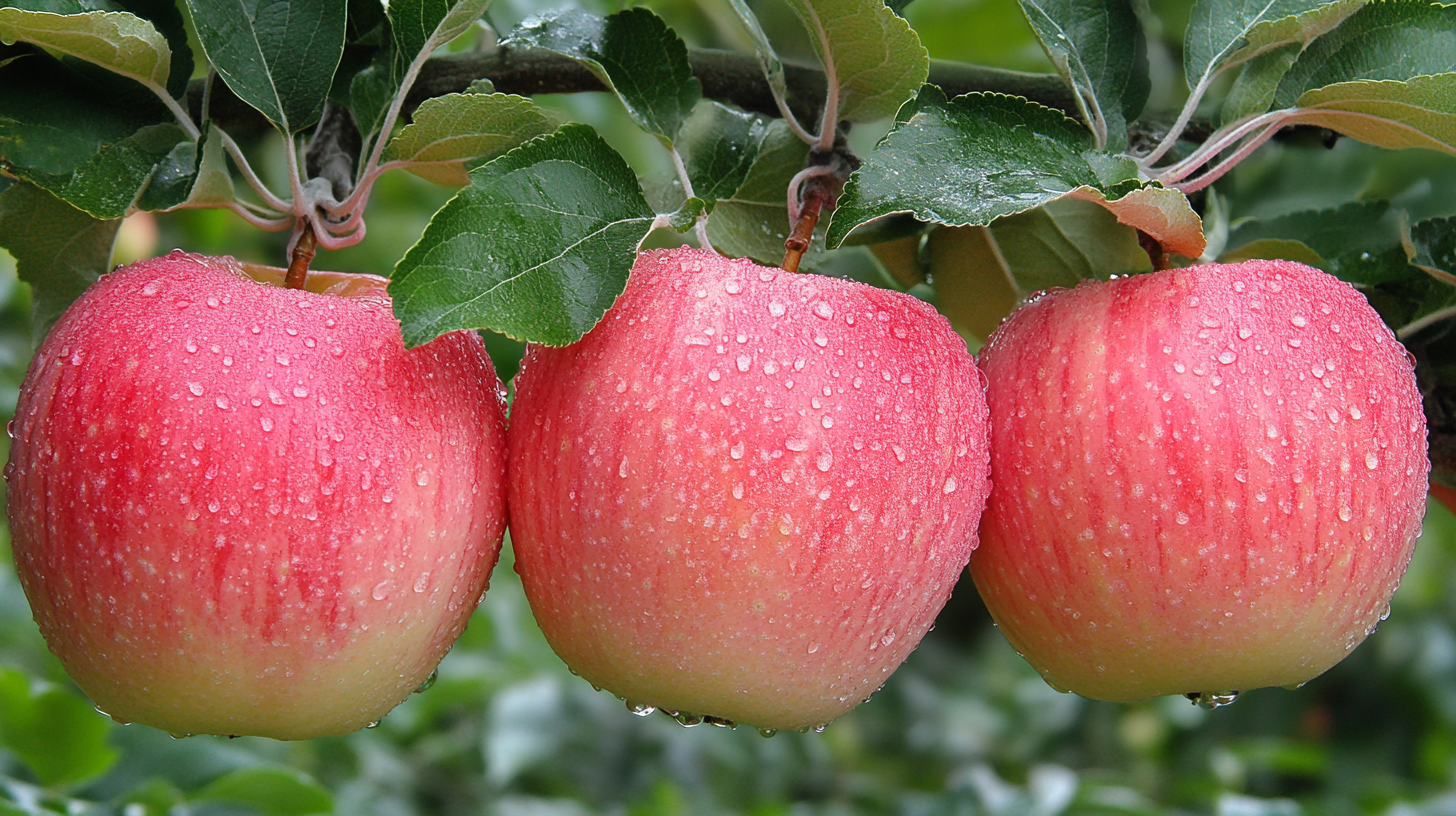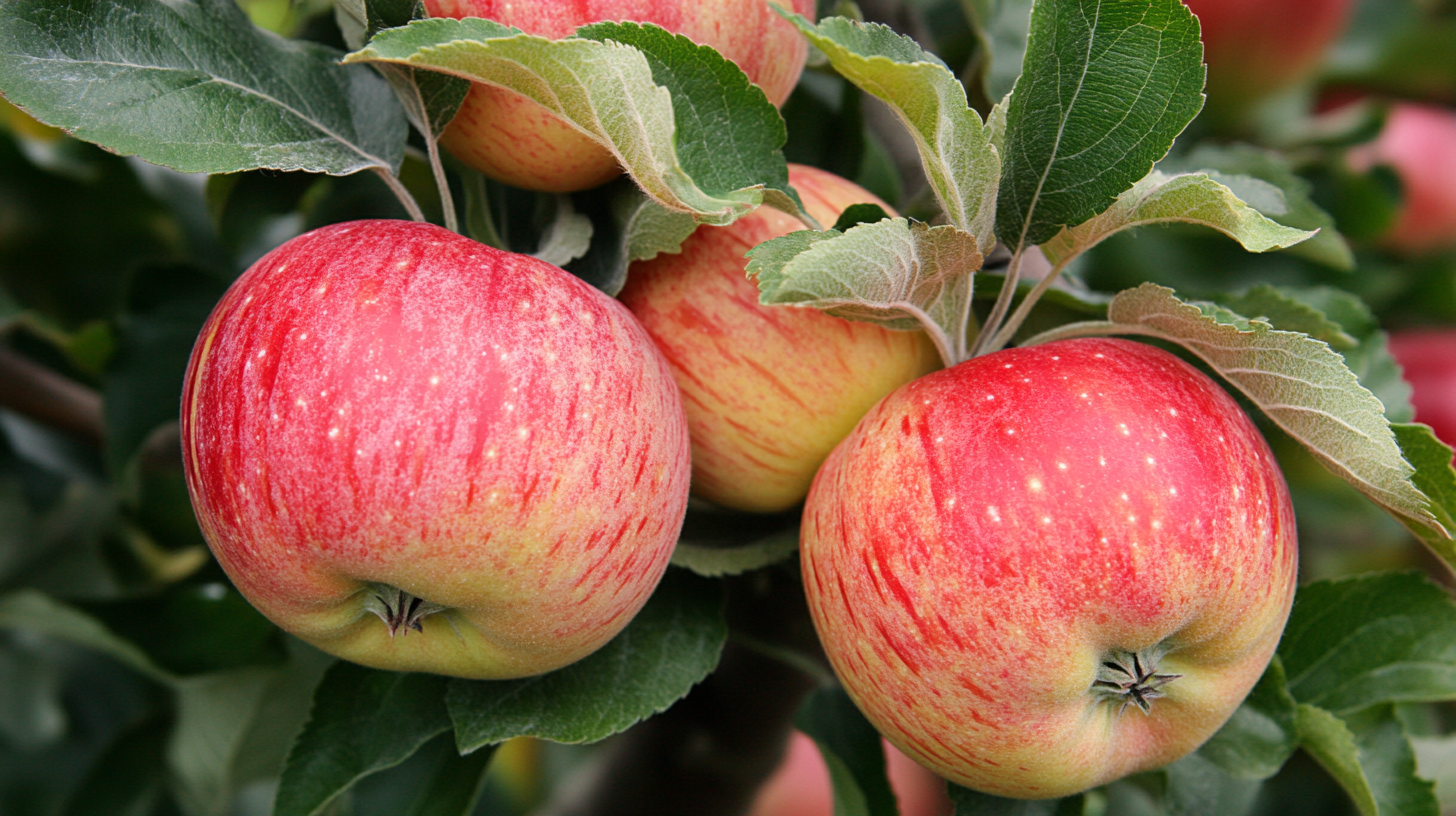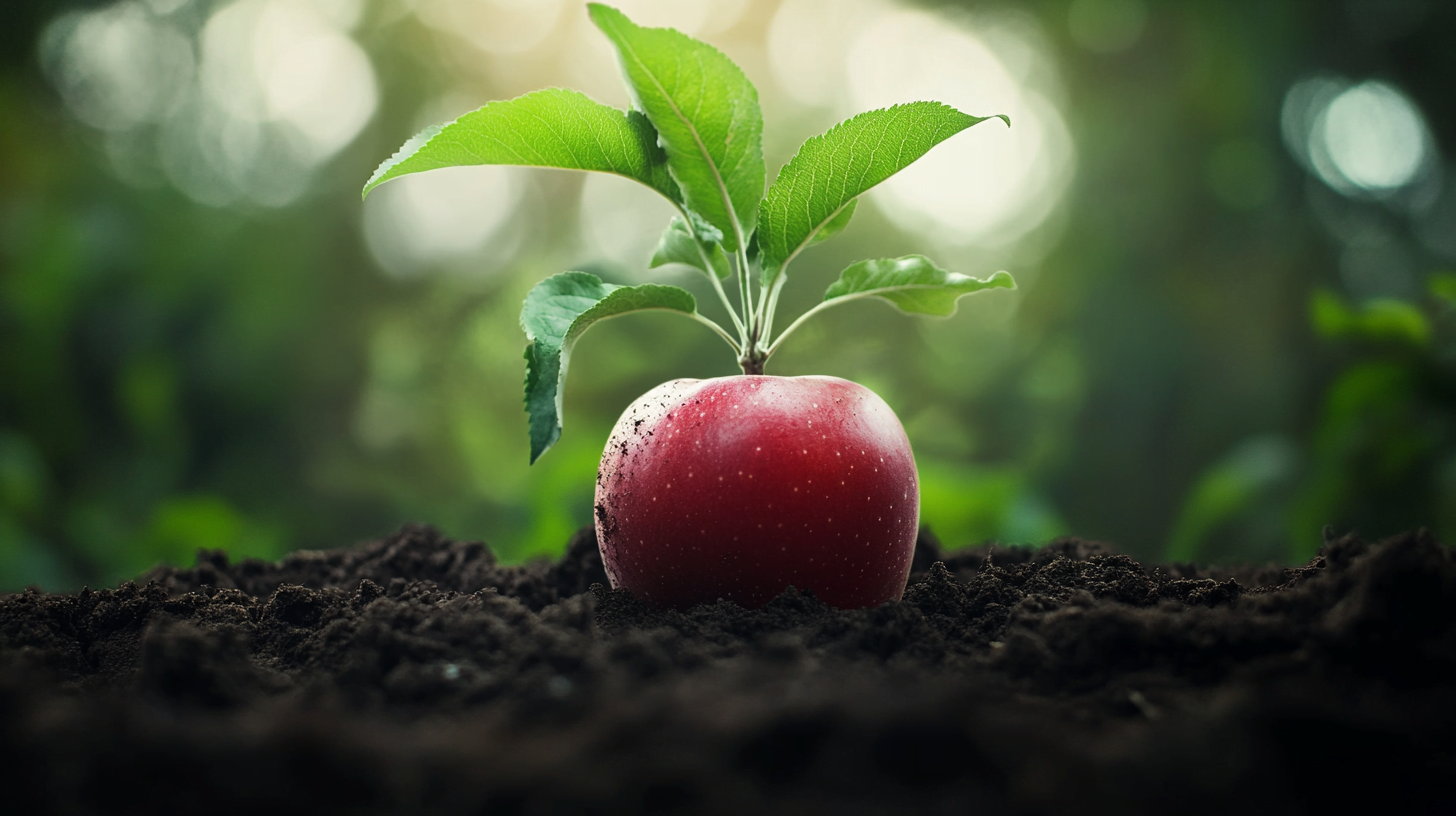Beautiful Plants For Your Interior
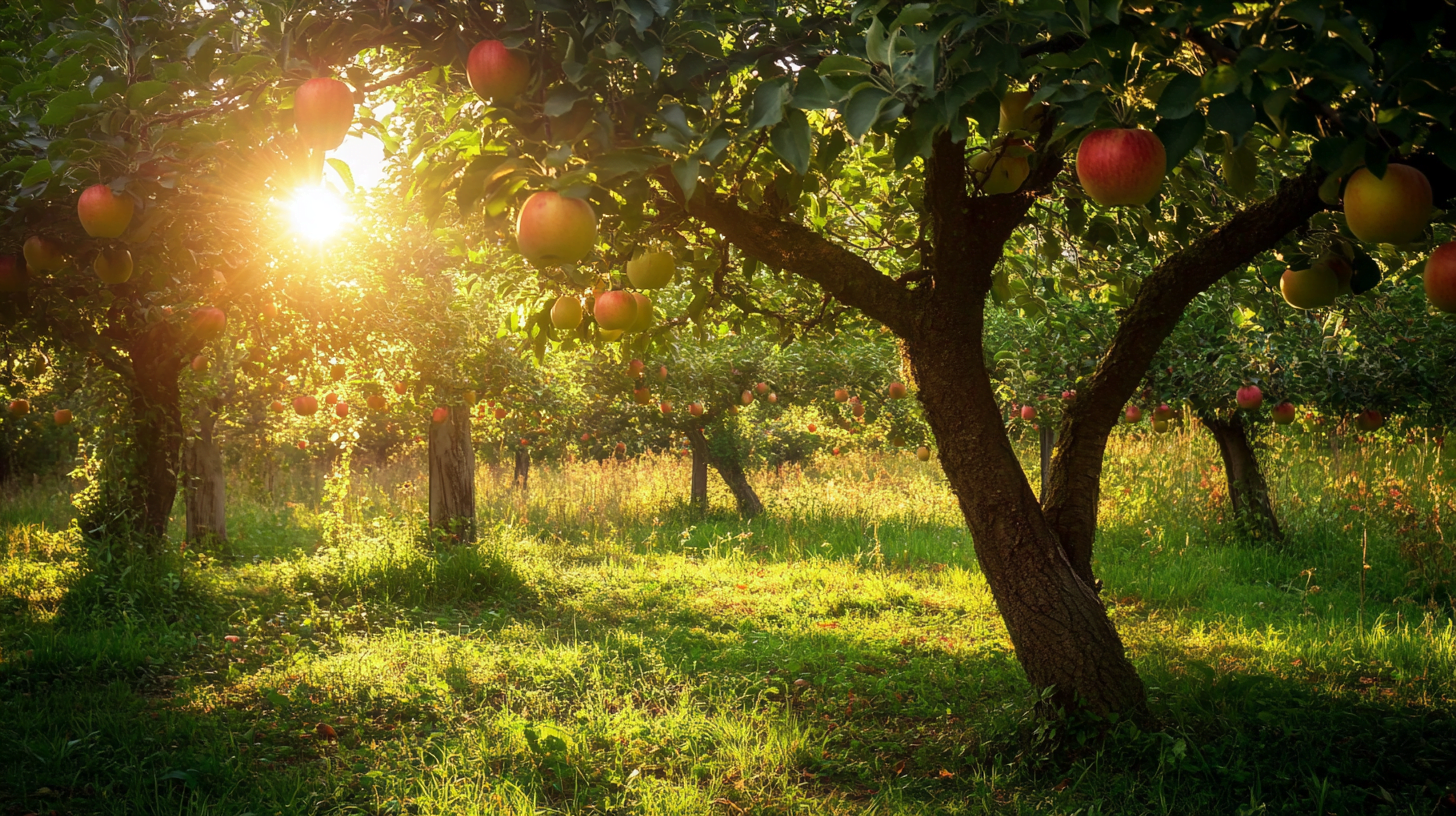
Table of Contents
Ever dreamed of plucking a ripe, juicy apple from your very own tree, even if your yard isn’t bathed in sunlight? You’re not alone! Many gardeners wonder if they can coax an apple tree to thrive in less-than-ideal conditions. Let’s dive into the world of shade-grown apples and uncover the secrets to success.
Understanding Apple Trees and Their Light Requirements
Before we tackle the shade question, let’s get to know our leafy friends a bit better.
The Natural Habitat of Apple Trees
Apple trees, originally from Central Asia, have spread across the globe, adapting to various climates. In the wild, they’re sun-lovers, basking in open meadows and on hillsides. But here’s the kicker: they’re also pretty adaptable. While they prefer soaking up rays, they can tolerate some shade, especially if it means surviving in a competitive forest environment.
How Much Sun Do Apple Trees Really Need?
Typically, apple trees are happiest with 6-8 hours of direct sunlight daily. But don’t throw in the towel if your yard’s a bit shadier! Let’s break it down:
- Full sun: 6+ hours of direct sunlight
- Partial sun: 4-6 hours of direct sunlight
- Partial shade: 2-4 hours of direct sunlight
- Full shade: Less than 2 hours of direct sunlight
While full sun is ideal, many apple trees can manage in partial sun or even partial shade. It’s all about choosing the right variety and employing some clever growing tactics.
Can Apple Trees Survive in Shade?
The Truth About Apple Trees in Shade
Let’s bust a myth right off the bat: apple trees can grow in shade. They might not be as productive as their sun-basking cousins, but with the right approach, you can still enjoy homegrown apples from a shadier spot.
However, there are some challenges:
- Reduced fruit production
- Smaller fruit size
- Less vibrant fruit color
- Increased susceptibility to diseases
But don’t let that discourage you! With the right strategies, you can overcome these hurdles.
Types of Shade: Not All Shadows Are Created Equal
When we talk about shade, it’s not just about the amount of light, but also the quality. Here’s a quick rundown:
| Shade Type | Description | Impact on Apple Trees |
|---|---|---|
| Dappled Shade | Filtered light through leaves | Moderate – trees can often adapt well |
| Partial Shade | Direct sun for part of the day | Good – many varieties can thrive |
| Full Shade | Little to no direct sunlight | Challenging – only for the most shade-tolerant varieties |
Dappled shade, like you’d find under a sparse canopy, can actually be beneficial. It provides some protection from intense afternoon sun while still allowing enough light for photosynthesis.
Best Apple Varieties for Shade Conditions
Shade-Tolerant Apple Cultivars
Not all apple trees are created equal when it comes to shade tolerance. Some varieties have adapted to perform better in less sunny conditions. Here are a few stars of the shade:
- Liberty: Disease-resistant and adaptable
- Granny Smith: Tolerates partial shade well
- Bramley’s Seedling: A hardy cooking apple
- Discovery: Early-ripening and shade-tolerant
- Egremont Russet: Known for its unique flavor and shade adaptability
These varieties have characteristics that help them cope with less light, such as larger leaves to capture more sunlight or a natural resistance to fungal diseases that thrive in shadier, damper conditions.
Dwarf vs. Standard Apple Trees in Shade
When it comes to size, smaller can be better in shaded areas. Here’s why:
Dwarf Apple Trees in Shade:
- Easier to manage and prune for maximum light exposure
- Can be moved if in containers
- Produce fruit earlier in their life cycle
Standard Apple Trees in Shade:
- May grow tall enough to reach above nearby obstacles for more light
- Have more extensive root systems to compete for nutrients
- Generally hardier and longer-lived
For most shaded gardens, dwarf or semi-dwarf varieties are the way to go. They’re easier to care for and can often produce a decent crop even in less-than-ideal light conditions.
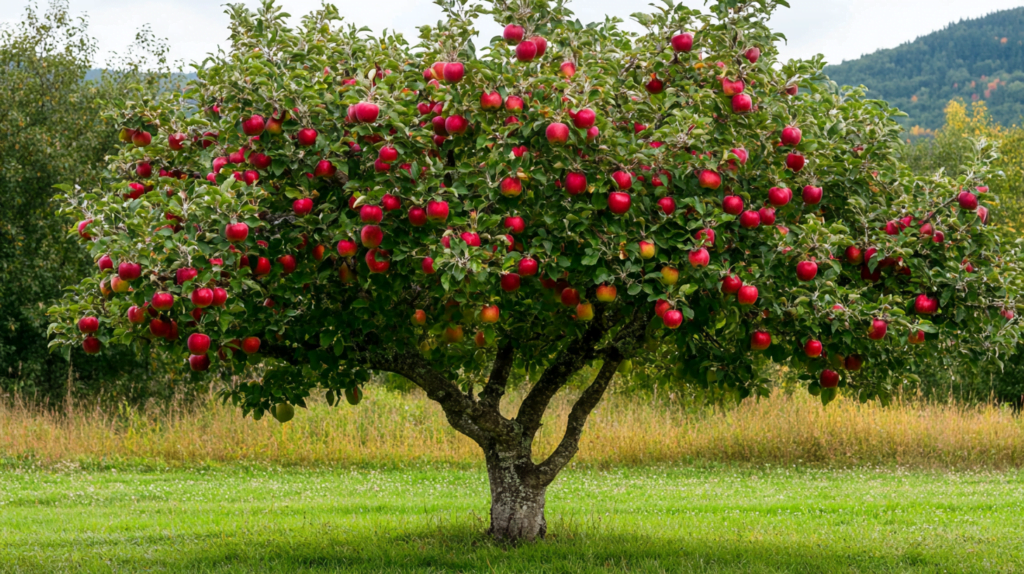
Strategies for Growing Apple Trees in Shade
Maximizing Available Light
Even in shadier spots, there are ways to help your apple tree soak up more rays:
- Strategic pruning: Keep the canopy open to allow light to penetrate. Remove crossing branches and thin out dense areas.
- Reflective mulch: Use light-colored mulch or even lay down reflective material to bounce light back up into the tree.
- Paint nearby surfaces white: If your tree is near a fence or wall, a coat of white paint can reflect more light onto your tree.
- Prune surrounding trees: If possible, trim back branches of nearby trees that may be blocking sunlight.
Soil and Nutrient Management for Shade-Grown Apples
Shade-grown apples need a little extra TLC when it comes to soil and nutrients:
- Well-draining soil is crucial: Shaded areas tend to stay damp longer, so good drainage is essential to prevent root rot.
- Slightly acidic soil (pH 6.0-7.0) is ideal for nutrient uptake.
- Regular soil testing helps you tailor your fertilization strategy.
- Organic matter like compost can improve soil structure and provide slow-release nutrients.
Remember, shade-grown trees may need less water but more consistent feeding to compensate for reduced photosynthesis.
Pest and Disease Considerations in Shaded Orchards
Shadier conditions can create a haven for certain pests and diseases. Stay vigilant and watch out for:
- Fungal diseases like apple scab and powdery mildew
- Pests such as aphids and codling moths, which may be more prevalent in shadier, damper conditions
Preventative measures are key:
- Choose disease-resistant varieties
- Ensure good air circulation through proper pruning
- Apply organic fungicides as a preventative measure
- Use pheromone traps to monitor and control insect populations
The Impact of Shade on Apple Tree Productivity
What to Expect from Shade-Grown Apples
Let’s be real: shade-grown apples won’t match the productivity of their full-sun counterparts. But that doesn’t mean you can’t enjoy a satisfying harvest. Here’s what to expect:
- Yield: Expect about 50-75% of what you’d get in full sun
- Fruit size: May be slightly smaller
- Color: Less intense, but still appealing
- Flavor: Can be just as delicious, sometimes with a slightly different flavor profile
Balancing Tree Health and Fruit Production
In shade conditions, it’s crucial to prioritize tree health over maximum fruit production. A healthy tree will produce better quality fruit, even if the quantity is less. Focus on:
- Proper pruning to maintain tree vigor
- Adequate nutrition to support growth and fruit development
- Pest and disease management to keep stress at bay
- Fruit thinning to prevent overbearing and maintain fruit quality
Alternative Solutions for Growing Apples in Shady Gardens
Espalier Techniques for Light-Challenged Spaces
Espalier is an ancient pruning technique that trains trees to grow flat against a wall or fence. It’s perfect for maximizing limited sunlight:
- Allows for better light penetration to all parts of the tree
- Can be used to grow apples in narrow, shaded spaces
- Creates a stunning visual feature in your garden
To espalier an apple tree:
- Choose a dwarf or semi-dwarf variety
- Plant the tree about 6-8 inches from a south-facing wall
- Prune and train branches to grow horizontally along wires or a trellis
- Maintain the shape through regular pruning
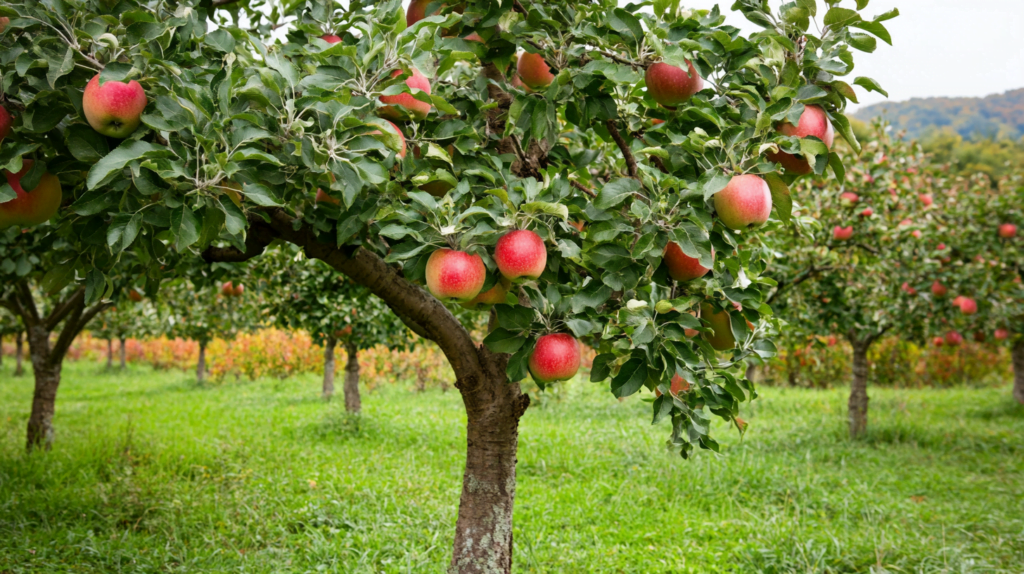
Container Growing: A Moveable Feast
Growing apple trees in containers offers flexibility for light-challenged gardens:
- Mobility: Move your tree to follow the sun or protect it from harsh conditions
- Space-saving: Perfect for small gardens or patios
- Soil control: Easier to maintain ideal soil conditions
Tips for container-grown apples:
- Choose a dwarf variety suited for container growing
- Use a large pot (at least 50 liters) with good drainage
- Use high-quality potting mix and fertilize regularly
- Water consistently, especially during fruit development
FAQs About Growing Apple Trees in Shade
Q: Can I grow apple trees in full shade?
A: While apple trees can tolerate partial shade, full shade (less than 2 hours of direct sunlight) is challenging. It’s best to ensure at least 4 hours of direct sun or bright, dappled shade throughout the day.
Q: How long does it take for shade-grown apple trees to produce fruit?
A: Shade-grown apple trees may take a bit longer to fruit, typically 3-5 years for dwarf varieties and 5-7 years for standard trees. Patience is key!
Q: Will shade-grown apples taste different?
A: Shade can affect flavor, often resulting in slightly less sweet fruit. However, many people find the flavor balance of shade-grown apples quite appealing, with a good mix of sweetness and acidity.
Q: Can I use artificial light to supplement sunlight for my apple trees?
A: While possible, it’s generally not practical or cost-effective for outdoor trees. If growing indoors, high-intensity grow lights can be used to supplement natural light.
Q: Are there any benefits to growing apple trees in partial shade?
A: Yes! Partial shade can protect trees from intense afternoon sun, reduce water stress, and in some cases, lead to a longer harvest period as fruits ripen more slowly.
Growing apple trees in shade may be challenging, but it’s far from impossible. With the right variety selection, careful planning, and a bit of extra TLC, you can enjoy the fruits of your labor even in less sunny spots. Remember, gardening is all about experimentation and learning from your experiences. So why not give shade-grown apples a try? You might be surprised by the sweet success that awaits!
Have you had experience growing apple trees in shady conditions? We’d love to hear about your triumphs and challenges. Share your story in the comments below, and don’t forget to subscribe for more gardening tips and tricks. Happy growing!
